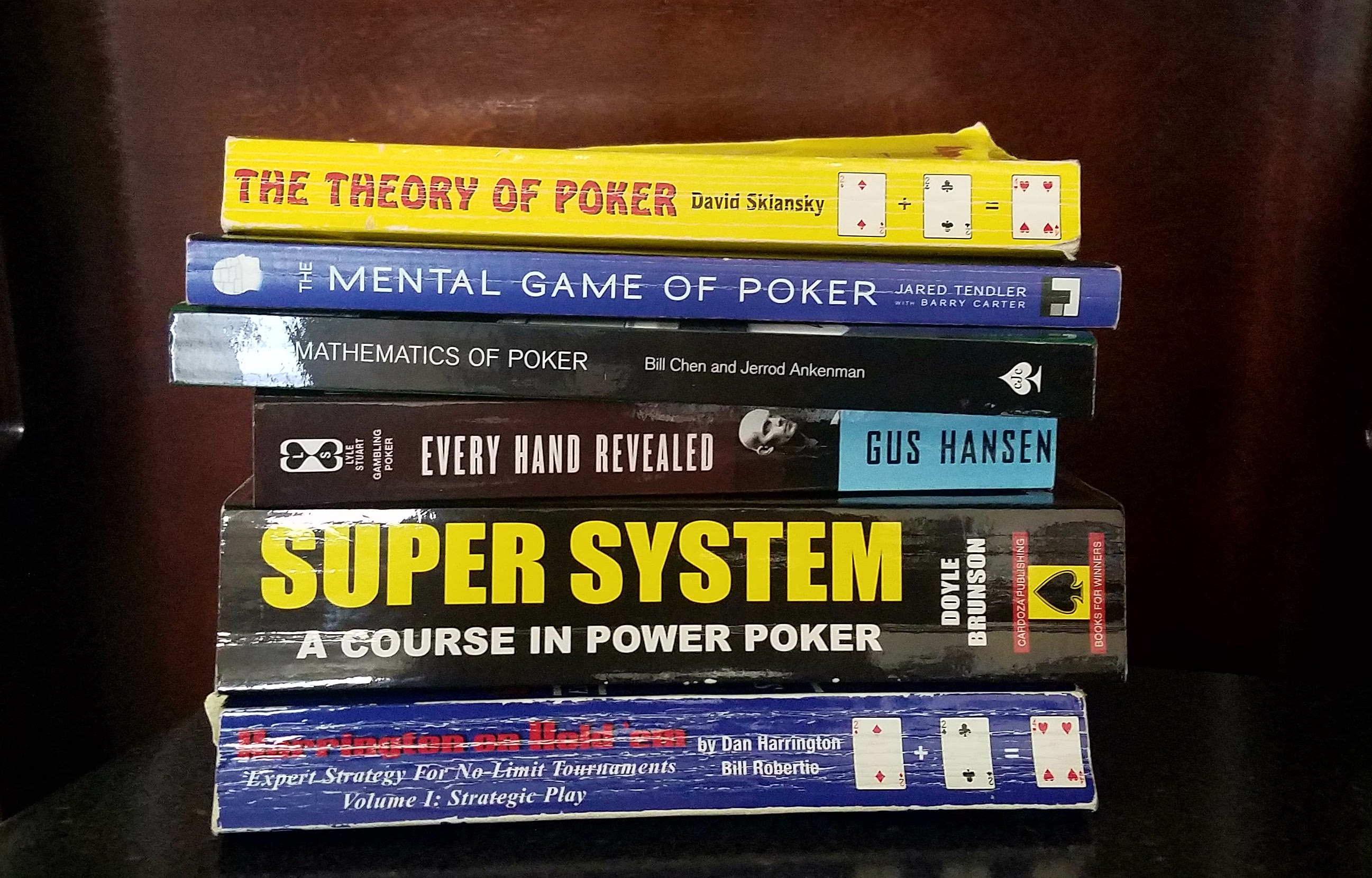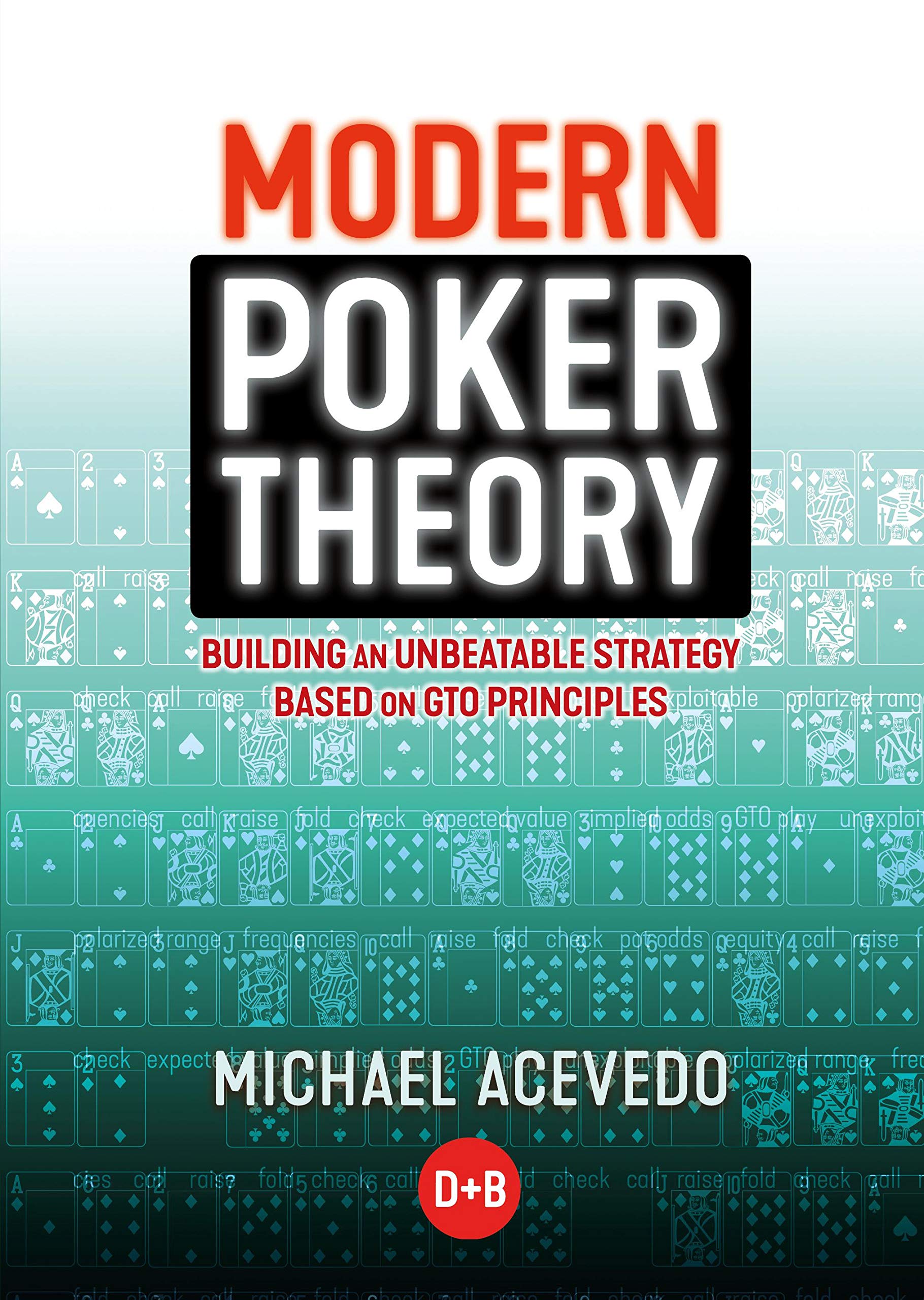When Mike Caro writes a book on winning, the poker world takes notice. And it should: Caro is the world's foremost authority on poker theory and psychology, and his work has influenced every professional player including Doyle Brunson, who relied.
Next:- Probably its most important contribution to poker theory is Sklansky's Fundamental Theorem of Poker: Every time you play a hand differently from the way you would have pl This was the first poker book recommended to me by an avid nonprofessional poker player who happens to be a mathematician.
- David Sklansky is known on the poker circuit as 'the Mathematician' and this book is considered one of the fundamental texts for serious students of the game, still recommended to new players despite its age. Probably its most important contribution to poker theory is Sklansky's Fundamental Theorem of Poker.
- The theory of poker Item Preview remove-circle Share or Embed This Item. EMBED EMBED (for wordpress.com hosted blogs and archive.org item tags) Want.
- Lot of poker questions, and most are pretty easy to answer. But I've never had a good response when someone asks me to recommend a book for understanding game theory as it relates to poker. I usually end up explaining that there are good poker books and good game theory books, but no book addresses the relationship between the two.
 Up:
Up: Classic Books on Previous: Classic Books on
Classic Books on Previous: Classic Books on ``The Theory of Poker'
Probably the single most important book ever written on poker is ``TheTheory of Poker' by David Sklansky [87]. Written in 1987, itwas the first book to correctly identify many of the underlying strategicprinciples of poker. These concepts are illustrated with examples fromTexas Hold'em, Seven-Card-Stud, Five-Card-Draw, Seven-Card-Lowball, andLowball-Draw, but they are equally applicable to all variations of poker.

While it is beyond the scope of this essay to present a complete overviewof poker theory, a few examples of essential concepts will be given forcontext. First, after explaining the nature of mathematical expectation,Sklansky states the overriding principle of the game, which he calls ``TheFundamental Theorem of Poker'.
 Sklansky's Fundamental Theorem of Poker:
Sklansky's Fundamental Theorem of Poker:Every time you play a hand differently from the way you would have played it if you could see all your opponents' cards, they gain; and every time you play your hand the same way you would have played it if you could see all their cards, they lose. Conversely, every time opponents play their hands differently from the way they would have if they could see all your cards, you gain; and every time they play their hands the same way they would have played if they could see all your cards, you lose.
The Fundamental Theorem is stated in common language, but has a precisemathematical interpretation. The expected value of each decision madeduring an actual game can be compared to the expectation of the correctdecision, based on perfect information. Each player's long termexpectation is determined precisely by the relative frequency and severityof these ``misplays'. On average, a player who makes fewer misplays thanher opponents will be a winning player. The theorem may appear to statethe obvious, but has many subtle implications to poker strategy, some ofwhich are illustrated in the text.
Other fundamental concepts introduced in this book include ``odds' (potodds, effective odds, implied odds and reverse implied odds), the value ofdeception, the danger of the free card, the semi-bluff, and the importanceof position. Each of these notions can be encorporated into a theoreticalframework for understanding the game, and could prove to be substantialstrengths for a computer algorithm.
Issues of practical importance are also addressed in the book, such asreading hands, understanding the psychology of poker, and evaluating theprofitability of a game. While these topics may be of a less theoreticalnature, they are among the many abilities required for play at the highestlevels. It is unclear to what degree a computer algorithm can excel atthese ``human' aspects of the game, or whether it is even necessary toattain world class strength.
Note that this classic book does not attempt to give a step-by-stepprocedure for playing each game, but instead teaches the player how tothink correctly about each situation that may arise. This requiresconsiderable effort on the part of the student, but once the principlesare fully understood, they are much more reliable, and can be applied toany form of poker, regardless of the particular characteristics or gameconditions.
Sklansky also includes a chapter on game theory, as it applies to bluffingand calling. This is done largely for the sake of completeness, and toshow that he is aware of such views. He then goes on to explain some ofthe limitations of such a system, and justifies the more pragmaticapproach to bluffing, described in a separate chapter.
Next: ``Hold'em Poker for
The Theory Of Poker Audiobook
Up:The Theory Of Poker Audiobook
Classic Books onThe Theory Of Poker Applied To No-limit Pdf
Previous: Classic Books onThe Theory Of Poker Applied To No-limit

Free Poker Books Pdf
& SchaefferThu Feb 12 14:00:05 MST 1998